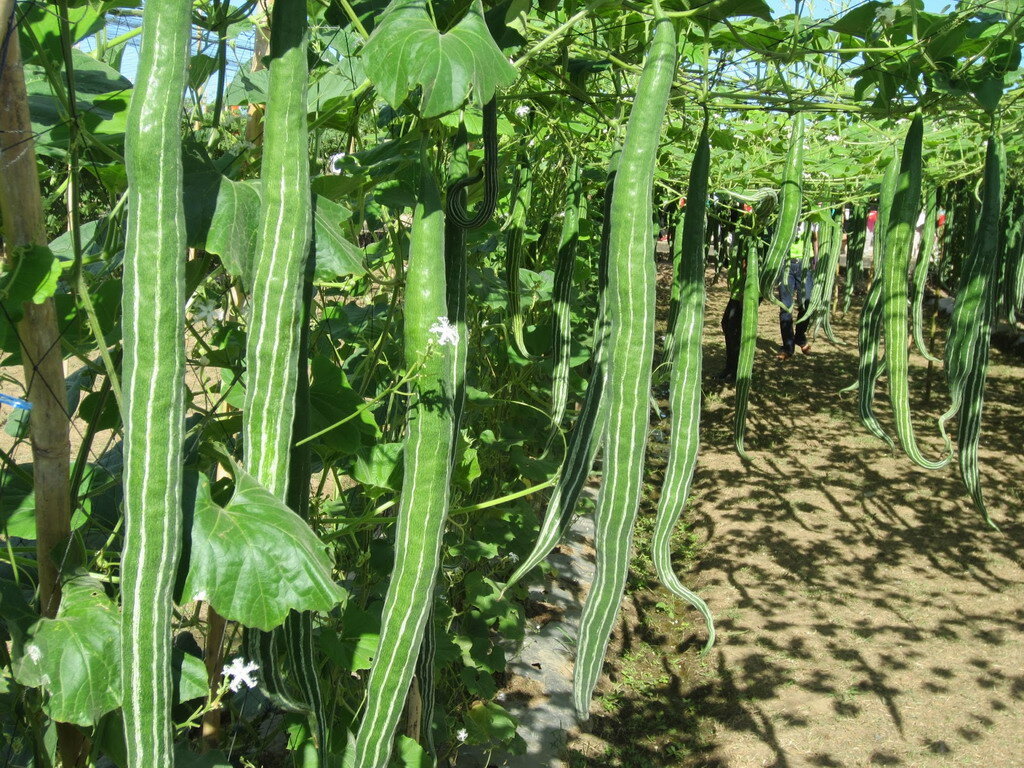The Serpentine Snake Gourds
The snake gourd is an annual vine with forked tendrils and kidney- or heart-shaped leaves that are sometimes palmately lobed. The white unisexual flowers have long lacy fringes on the five petals and open at night (they smell divine). The narrow fruits can reach up to 5 feet in length, but are best picked at much smaller dimensions for eating; they are green with white stripes when young, becoming a red-orange color when mature much like bitter melon, which they are related to.
The flower of the snake gourd is spectacular.
The common name "snake gourd" refers to the narrow, twisted, elongated fruit. The soft-skinned immature fruit can reach up to almost 60 inches in length. It is soft, bland, somewhat mucilaginous flesh is similar to that of the luffa and the calabash. It is popular in the cuisines of South Asia and Southeast Asia and is now grown in some home gardens in Africa. With some cultivars, the immature fruit has an unpleasant odor and a slightly bitter taste, both of which disappear in cooking. The fruit becomes too bitter to eat as it reaches maturity, but it does contain a reddish pulp that is used in Africa as a substitute for tomatoes. The shoots, tendrils and leaves are also eaten as greens.
Formerly, the cultivated form was considered a distinct species, T. anguina, but it is now generally regarded as conspecific with the wild populations, as they freely interbreed:
Trichosanthes cucumerina var. anguina – cultivated variant
Trichosanthes cucumerina var. cucumerina – wild variant
The wild Trichosanthes cucumerina is found in the wild across much of South and Southeast Asia, including India, Bangladesh, Nepal, Pakistan, Sri Lanka, Indonesia, Malaysia, Myanmar (Burma), and southern China.
The related Japanese snake gourd (Trichosanthes pilosa, sometimes called T. ovigera or T. cucumeroides), very similar in vegetative morphology, but the fruit of T. pilosa is round to egg-shaped, only about 7 cm long.
The snake gourd cut up for cooking.
Snake gourd is picked when of a decent size, but still green. The inner pulp is generally scraped out, the outer skin lightly peeled, and the flesh is cooked or pickled in a variety of ways.
Easy to grow, direct sow seeds into the ground after threat of frost, or plant beforehand and protect from any cold snaps. Full to part sun, regular amended garden soil, and even moisture keep plants happy. They generally love our summers here and grow and produce with vigor. Feed occasionally with an organic, balanced plant food. Give plants structure to climb, as they are fast-growing vines. They produce heavily so have a plan to either trade/give away, or pickle fruits because you will produce more than you can eat.



